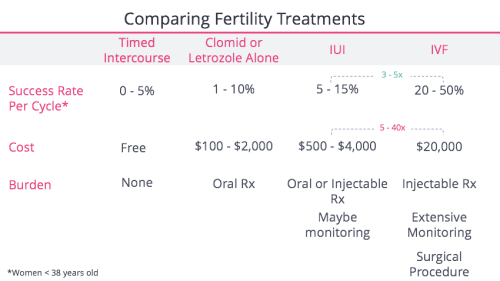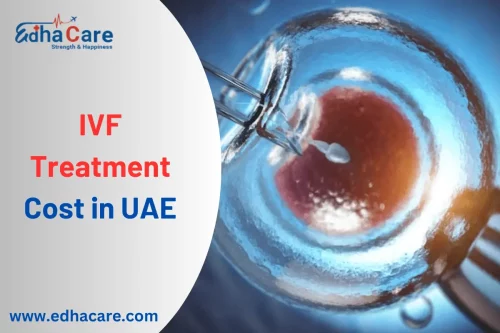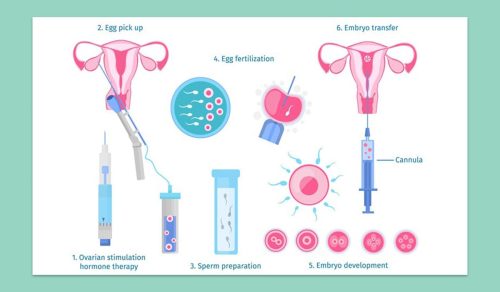How Much Does IVF Really Cost? Your Guide to Understanding the Price Tag
In vitro fertilization (IVF) is a life-changing option for many hoping to build a family, but the cost can feel like a giant question mark. If you’re wondering how much IVF might set you back, you’re not alone—it’s one of the first things people ask when they start exploring fertility treatments. The truth is, the price varies widely depending on where you live, what your specific needs are, and how much help you can get from insurance or other resources. Let’s break it all down so you can get a clear picture of what to expect, plus some insider tips to make it more manageable.
What’s the Average Cost of IVF in the U.S.?
IVF isn’t cheap, but knowing the ballpark figures can help you plan. In the United States, as of 2025, a single IVF cycle typically costs between $12,000 and $25,000. That’s the “base price” you’ll see quoted most often, covering the essentials like monitoring, egg retrieval, lab work, and embryo transfer. But here’s the catch: that number doesn’t always include everything you might need, and extras can add up fast.
For example, the American Society for Reproductive Medicine pegs the average at around $12,400 per cycle, but other sources—like recent posts on X and studies from Stanford—suggest it’s closer to $20,000 when you factor in real-world variables. Why the range? It depends on your clinic, your location, and whether you need additional procedures. A cycle in New York City or Los Angeles might hit the higher end, while a smaller town could be more affordable.
Breaking Down the Base Cost
So, what’s included in that $12,000-$25,000? Here’s a quick rundown:
- Monitoring: Ultrasounds and blood tests to track your progress (about $1,500-$3,000).
- Egg Retrieval: The procedure to collect eggs from your ovaries ($3,000-$5,000).
- Lab Fees: Fertilizing the eggs and growing embryos ($3,000-$6,000).
- Embryo Transfer: Placing the embryo in your uterus ($1,500-$3,000).
- Anesthesia: For the egg retrieval process ($500-$1,000).
That’s the core of it, but most people don’t stop at one cycle—more on that later.
Why Does IVF Cost So Much?
IVF feels expensive because it is expensive, and there’s a reason for that. It’s a high-tech process that involves skilled doctors, specialized equipment, and a lot of time. Think of it like hiring a team of experts to build something custom just for you—it’s not a one-size-fits-all deal.
First, there’s the medical side. Fertility specialists use advanced tools to stimulate your ovaries, retrieve eggs, and create embryos in a lab. That takes cutting-edge technology and a staff of embryologists, nurses, and doctors working together. Then there’s the medication—those hormone injections aren’t cheap, often running $3,000 to $5,000 per cycle. Add in the fact that clinics have to cover overhead costs like rent and utilities (especially in big cities), and you start to see why the bill climbs.
But it’s not just about the process itself. Research from Stanford’s Institute for Economic Policy Research shows that IVF’s cost is also tied to demand and access. As more people turn to IVF—whether because of infertility, delayed parenthood, or family-building choices like surrogacy—the market adjusts. Clinics in high-demand areas charge more, while limited insurance coverage keeps prices steep for patients paying out of pocket.
Hidden Costs You Might Not Expect
The base price is just the starting point. Plenty of things can push your total higher, and they often catch people off guard. Here are some extras to watch out for:
Medications
Those fertility drugs—like follicle-stimulating hormones—can cost anywhere from $1,000 to $6,000 per cycle, depending on your dosage and how your body responds. Some folks need more meds to get enough eggs, which bumps up the price.
Genetic Testing
If you want to screen embryos for genetic issues (called preimplantation genetic testing, or PGT), add $1,000 to $5,000. It’s optional but popular for older parents or those with a history of genetic conditions.
Freezing Embryos
Got extra embryos? Freezing them for later use costs $500 to $1,000 upfront, plus $300 to $600 a year for storage. It’s a smart move if you’re planning more kids, but it’s another layer of expense.
Donor Eggs or Sperm
Using your own eggs and sperm keeps costs lower, but if you need a donor, expect to pay more. Donor eggs can run $20,000 to $45,000 per cycle, while donor sperm is cheaper at $500 to $1,500.
Travel and Time Off
If your clinic isn’t nearby, gas, flights, or hotel stays add up. Plus, you might need to take time off work for appointments and recovery—something that’s rarely factored into the headline numbers.
Multiple Cycles
Here’s the big one: most people don’t get pregnant on their first try. Studies show the average patient needs two to three cycles, pushing the total cost to $40,000-$60,000 or more. Success rates hover around 30-35% per cycle for women under 35, dropping as age goes up, so the odds often mean multiple attempts.
How Location Affects IVF Costs
Where you live plays a huge role in what you’ll pay. IVF in a big city with a high cost of living—like San Francisco or Chicago—can easily top $25,000 per cycle. Clinics there deal with higher rent and staff salaries, and they pass those costs on to you. Meanwhile, a rural clinic in the Midwest might charge closer to $12,000.
Take Alabama, for example. After a 2024 court ruling called embryos “children,” some clinics paused IVF, driving patients to neighboring states like Georgia or Tennessee. That shift spiked demand—and prices—in those areas. Posts on X from early 2025 highlight how travel costs for “IVF tourism” are now a real factor for many families.
On the flip side, states with insurance mandates—like Massachusetts or New Jersey—can lower your out-of-pocket costs if you qualify. More on insurance in a bit.
Does Insurance Cover IVF?
Insurance is a game-changer, but it’s not a guarantee. In the U.S., only 21 states have laws requiring some form of fertility coverage as of 2025, and even then, IVF isn’t always included. If you’re lucky enough to have coverage, it might cap at a certain number of cycles or exclude extras like PGT.
For most people, though, insurance doesn’t help much. Medicaid, for instance, rarely covers IVF, and many private plans treat it as an “elective” procedure. A 2024 study from the National Bureau of Economic Research found that when insurance doesn’t cover IVF, lower-income families are hit hardest—they’re more likely to skip treatment altogether.
Quick Checklist: Does Your Insurance Help?
✔️ Check your plan: Look for terms like “infertility treatment” or “assisted reproductive technology.”
✔️ Ask about limits: Some plans cover only one cycle or cap at $10,000.
❌ Don’t assume: Even in mandate states, self-insured employer plans (about 61% of workers) can opt out.
If you’re uninsured or underinsured, don’t lose hope—there are other ways to cut costs.
Creative Ways to Pay for IVF
IVF’s price tag can feel overwhelming, but people get creative to make it work. Here are some practical ideas based on what’s worked for others:
Financing Plans
Many clinics offer payment plans, letting you spread the cost over months or years. Some even partner with companies like Future Family or CapexMD, which provide IVF-specific loans with interest rates from 5% to 15%. It’s not free money, but it can make the upfront hit more manageable.
Grants and Discounts
Nonprofits like Baby Quest or the Starfish Foundation give out grants—sometimes up to $15,000—to help cover IVF. Clinics might also offer discounts for military families, teachers, or multi-cycle packages (think $25,000 for three tries instead of $20,000 each).
Employer Benefits
More companies are stepping up. Tech giants like Google and smaller firms alike now offer fertility benefits—some cover $20,000 or more. Check with HR to see if your job has a hidden perk.
Crowdfunding
Sites like GoFundMe are full of IVF success stories. Sharing your journey with friends and family can raise thousands. One couple I read about collected $8,000 in a month just by being open about their struggle.
Mini-IVF
A lesser-known option, mini-IVF uses lower doses of meds to cut costs to $5,000-$7,000 per cycle. It’s not for everyone (success rates can be lower), but it’s worth asking your doctor about.
Interactive Quiz: What’s Your IVF Budget?
Let’s make this personal. Answer these quick questions to estimate your starting point:
- Where do you live?
- A) Big city (add $5,000 to the base)
- B) Small town (stick with $12,000-$15,000)
- How old are you?
- A) Under 35 (one cycle might do it)
- B) Over 35 (plan for two or three)
- Do you have insurance coverage?
- A) Yes (subtract $5,000-$10,000)
- B) No (full price applies)
- Will you need extras like PGT or donors?
- A) Yes (add $5,000-$20,000)
- B) No (keep it simple)
Tally it up! If you picked mostly A’s, you might be looking at $30,000+. Mostly B’s? You could stay under $20,000. It’s rough, but it’s a start.
The Emotional Cost Nobody Talks About
Money isn’t the only price you pay with IVF. The emotional toll is real, and it’s something the glossy clinic brochures don’t always cover. Imagine riding a rollercoaster of hope and disappointment—every negative test or failed cycle can feel like a punch to the gut. A 2024 Stanford study found that couples facing infertility are more likely to experience anxiety, depression, and even divorce. It’s not just about the dollars; it’s about the mental stamina to keep going.
Take Sarah, a 38-year-old teacher I heard about through a friend. She and her husband spent $45,000 over three cycles. The first two failed, and she said the hardest part wasn’t the money—it was the silence at home after each loss. They got their daughter on the third try, but she wishes someone had warned her about the emotional marathon.
Coping Tips
- Talk it out: Find a support group or therapist who gets it.
- Set boundaries: Decide how many cycles you’re willing to try before taking a break.
- Celebrate small wins: A good egg count or a healthy embryo is progress.
IVF Success Rates and Cost Per Baby
Here’s a question people don’t ask enough: how much does IVF cost per successful birth? It’s not just about one cycle—it’s about the end goal. Research from the U.S. Department of Health and Human Services estimates that a single cycle can range from $15,000 to $30,000, but the cost per live birth can soar to $50,000-$60,000 when you account for multiple attempts.
For women under 35, the success rate is about 35% per cycle, dropping to 10-15% by age 40. That means older patients might spend $100,000 or more to get that baby. A 1994 study (still relevant today) put the cost per delivery at $66,667 for the first cycle, rising to $114,286 by the sixth. Inflation and tech advances push those numbers higher now.
Table: Cost Per Birth by Age
| Age Group | Success Rate (Per Cycle) | Avg. Cycles Needed | Estimated Cost Per Birth |
|---|---|---|---|
| Under 35 | 35% | 2-3 | $40,000-$60,000 |
| 35-40 | 20-25% | 3-4 | $60,000-$100,000 |
| Over 40 | 10-15% | 4-6 | $100,000-$150,000 |
This isn’t to scare you—it’s to help you plan realistically.
New Trends in IVF Costs for 2025
IVF isn’t static, and 2025 is bringing some shifts worth knowing about. Based on recent chatter on X and industry reports, here’s what’s new:
Low-Cost Clinics
More “budget” IVF clinics are popping up, offering cycles for $5,000-$10,000. They cut corners on fancy waiting rooms and use streamlined protocols, but they’re making waves by targeting middle-income families. A 2014 study from the National Institutes of Health predicted this trend, and it’s finally hitting mainstream.
Telemedicine Boost
Post-COVID, remote monitoring is slashing travel costs. You can do some check-ins via video, and wearable tech tracks your hormone levels at home. It’s not universal yet, but it’s saving people hundreds per cycle.
Policy Push
After Trump’s 2024 IVF executive order, there’s buzz about federal subsidies. Nothing’s concrete, but posts on X suggest a $12,000-$25,000 cycle could drop if tax credits or grants kick in. Keep an eye on this—it could change the game.
Three Things You Won’t Find in Most IVF Cost Guides
Most articles stick to the basics, but here are three angles that don’t get enough airtime:
The Cost of “Add-Ons” and Their Real Value
Clinics love pitching extras like acupuncture, endometrial scratching, or time-lapse imaging. They sound great, but a 2022 review in Human Reproduction found many lack solid evidence of boosting success rates. Each can cost $500-$2,000, so ask your doctor: “Is this worth it for me?” Don’t just buy the upsell.
The Long-Term Financial Ripple
IVF doesn’t end with a baby. If you use donor eggs or surrogacy (up to $200,000 total), you might face legal fees for parental rights. Plus, multiple births (twins or triplets) are more common with IVF—about 20% of cycles—and double the diapers, daycare, and doctor visits. A 2023 Australian study calculated a $47.6 million savings when clinics cut multiple pregnancies, hinting at the hidden costs for parents.
The DIY Savings Hack Nobody Mentions
Some savvy patients order meds from overseas pharmacies (like in Canada or Mexico) where prices are 30-50% lower. It’s legal with a prescription, but you’ll need to research reputable sources and check customs rules. One couple saved $2,000 this way—risky, but it worked.
Step-by-Step: Budgeting for Your IVF Journey
Ready to crunch the numbers? Here’s a simple plan to figure out your IVF budget:
- Get a Quote: Call two or three clinics for their base price and what’s included.
- Add Meds: Ask your doctor for a rough estimate based on your age and health.
- Factor in Extras: Decide if you want PGT, freezing, or donors—add those costs.
- Check Support: Look into insurance, grants, or loans to offset the total.
- Multiply by Cycles: Estimate 2-3 cycles unless you’re under 35 with no issues.
- Buffer It: Tack on 10-20% for surprises like travel or failed attempts.
For example, a 32-year-old in Texas with no insurance might start at $15,000 per cycle, add $4,000 for meds, and plan for two cycles. That’s $38,000, plus a $4,000 buffer—about $42,000 total.
Poll: What’s Your Biggest IVF Cost Worry?
Let’s hear from you! Pick the one that keeps you up at night:
- A) The base price per cycle
- B) Hidden fees and extras
- C) Needing multiple cycles
- D) No insurance coverage
Drop your answer in the comments—I’ll tally the votes next week!
Real Stories: What IVF Cost Them
Numbers are one thing, but stories hit different. Here are two quick ones:
- Megan, 29, Colorado: One cycle, $18,000 total. Her employer covered half, and a grant knocked off $5,000. She got lucky on the first try—baby boy due this summer.
- James and Lisa, 41, Florida: Three cycles, $65,000. No insurance, so they took out a loan and sold a car. Twins arrived after the third round—worth every penny, they say.
Final Thoughts: Is IVF Worth the Cost?
IVF’s price tag is steep, no doubt about it. But for many, it’s the golden ticket to a family they couldn’t have otherwise. The key is going in with your eyes open—know the costs, plan for the extras, and lean on every resource you can find. Whether it’s $20,000 or $100,000, the value isn’t just in the money—it’s in what you’re building.
Got questions? Hit me up in the comments. I’m here to help you navigate this wild ride!




